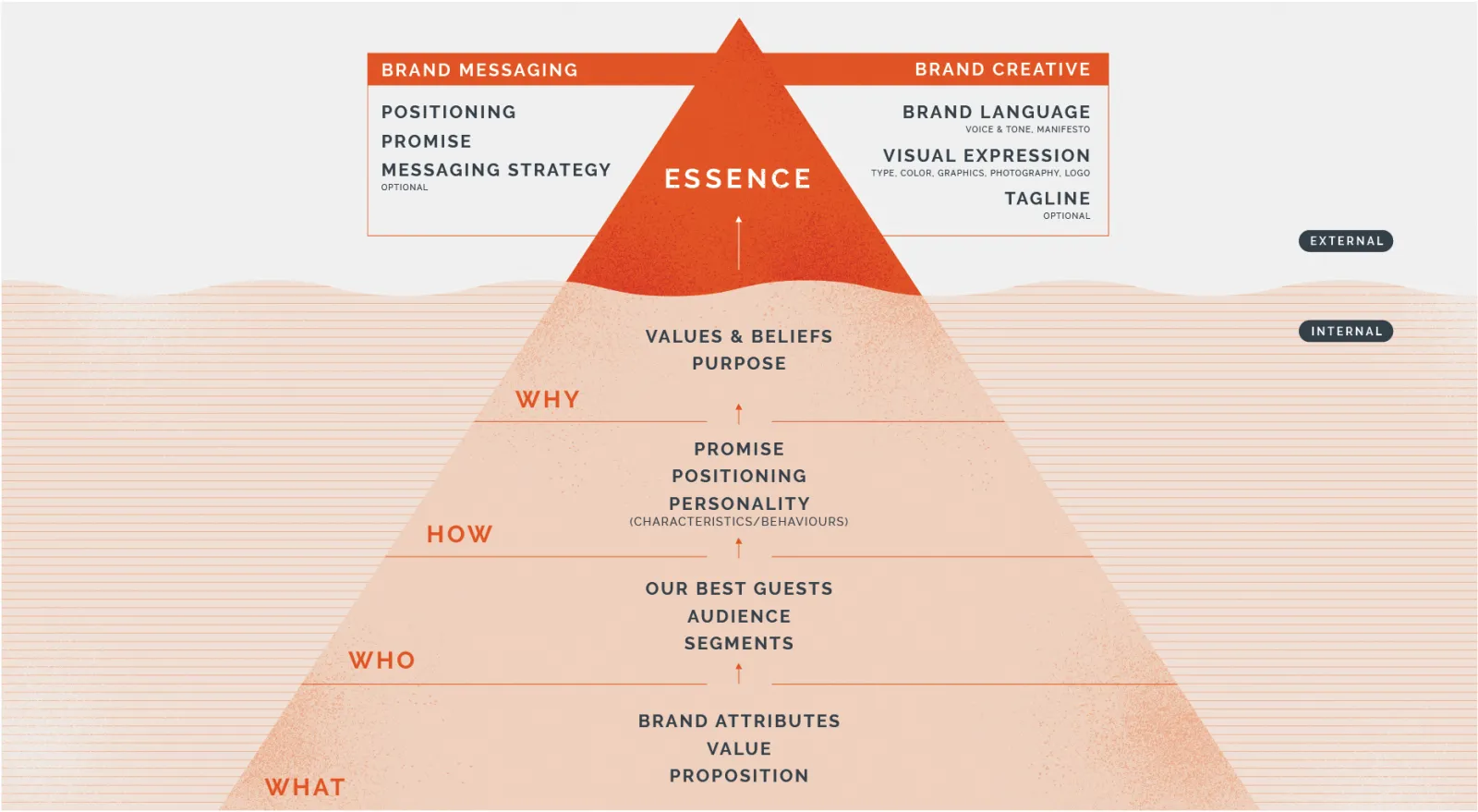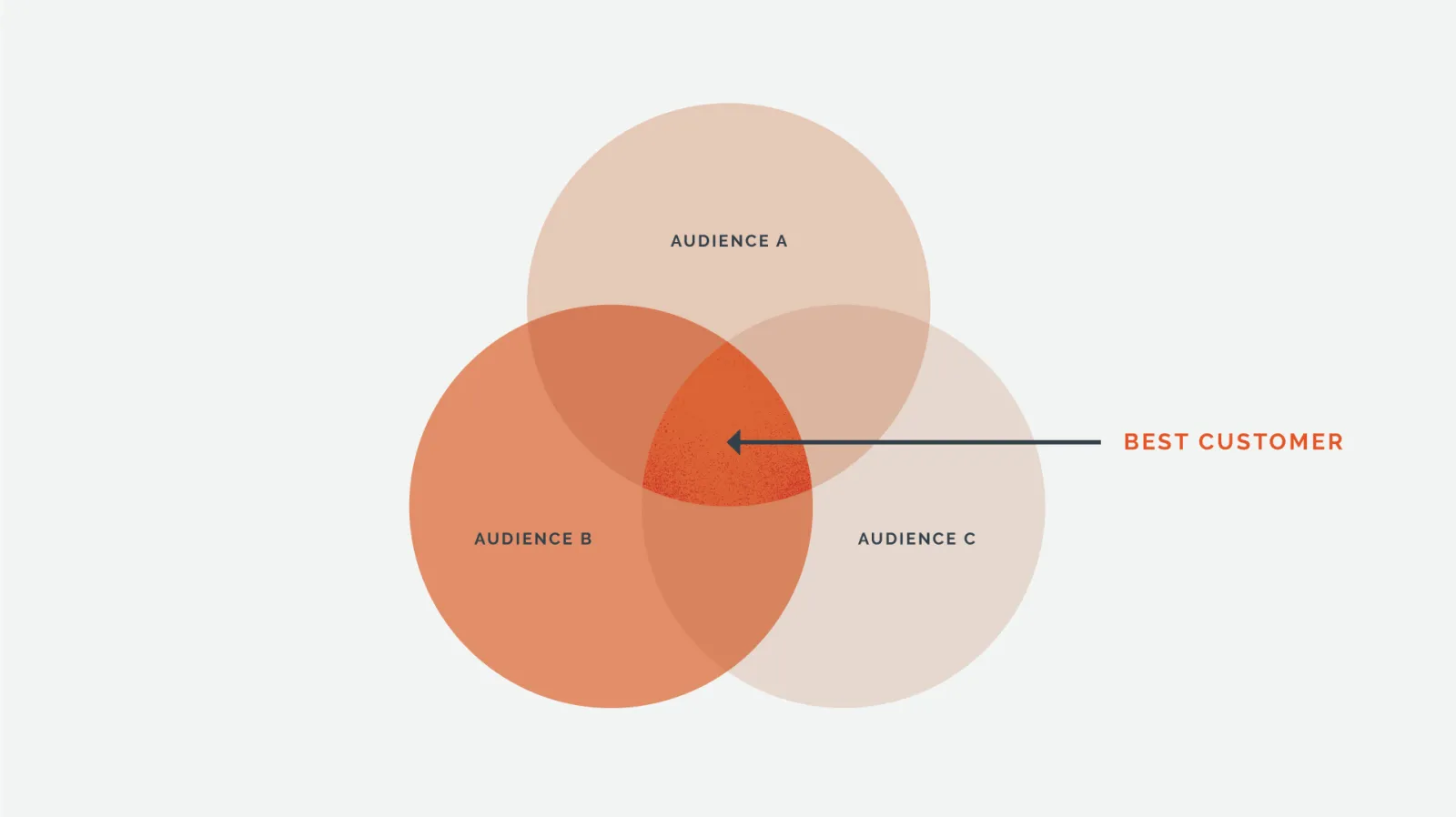The difference between branding and marketing
This article first ran in the January 2020 edition of this newsletter. Three-and-a-half years is a very long time in the world of branding and marketing, but this remains one of our most-read articles ever, and it is just as relevant today as it was then. For anyone who finds themselves a bit uncertain about the difference between branding and marketing, this article might just help clear things up.
At Origin, we describe ourselves as a digitally-driven creative and marketing agency, and we like to say (because we’re pretty sure it’s legit) that the work we do is about making connections, being true, becoming useful and ultimately motivating our clients’ customers to live a more inspired life outside.
Sounds pretty good, doesn’t it? It is… but it doesn’t really describe how we do what we do. And how we do it is that we help our clients develop brand platforms and marketing campaigns that connect to their audience. Yeah, we do other stuff, too, but this is the core of our work, and it’s probably what we’re best known for.
Frequently, we hear from outdoor marketers who aren’t really clear on the difference between branding and marketing, and we get it: We often debate whether a particular idea has more legs as an expression of a brand, or as a specific campaign that lives within the brand. Branding and marketing can look, sound, and feel devilishly similar, and sometimes it’s hard to know where to draw the line. To help clear things up, we thought it might be helpful to dig in and peel back the curtain just a little.
Branding as a backdrop story
Think of a brand platform as the outline of a novel that tells the story of your brand. Like all good novels, a well-developed brand platform is full of characters, chapters, and subplot (cleverly disguised as attributes, audience segments, positioning, values/beliefs, promise, personality, and purpose (see illustration below), while delivering a central message: The essence of your brand.
This is how we approach brand strategy:
In short, branding is the bigger picture, backdrop story you’re telling about your brand through both language and design; ideally, it’s something you’re consciously developing with every piece of content you release.
Fair warning: It’s also something that will be defined for you if you choose not to define it for yourself.
It’s important to note that a successful brand is developed over time; it can take years and even decades for a brand to reach maturity, which is why it’s critical to invest ample time and effort into developing your brand platform. The good news: As your brand becomes more established, both within the culture of your company or organization and within the minds of your consumers, it tends to be increasingly self-perpetuating.
Marketing is a chapter within that story
If branding is the novel, then a marketing campaign is a specific chapter within that novel. A marketing campaign is a shorter-term commitment, and while every campaign should be developed in accordance with the brand parameters, and should only serve to strengthen the brand, marketing campaigns often target a more tightly-defined audience segment, and are often tactical in nature. In short, a marketing campaign is typically meant to serve a specific purpose - say, to increase sales of a certain product within a particular time horizon - and will therefore carry a mandate to convey very precise information. But again (and this cannot be emphasized enough!), every marketing campaign should be vetted against the brand tenets. And if it doesn’t serve them? It’s time to head back to the drawing board.
The line in the sand
Is there a definitive line in the sand separating branding from marketing? The only honest answer is “no” (actually, it’s “hell, no!”). And, in fact, there shouldn’t be. Your company’s marketing and branding efforts should be in constant conversation with one another, and, as we at MMGY Origin have found time and time again, there may be ideas that could arguably and effectively be executed across either channel. How you decide to leverage a specific idea might depend as much on your current needs, as it does on the applicability of the idea as a branding or marketing execution.
Sometimes, brands will be tempted to forego the lengthy and pricy process of brand strategy and will instead attempt to make a marketing campaign perform double duty as a brand platform. This is a dangerous prospect; generally, marketing campaigns aren’t meant to live for much longer than a year. They are driven by insights that were relevant for the brand at a particular time and for specific reasons, but which are prone to changing relatively quickly. The implications of pressing a marketing campaign into branding duty can be worrying: a marketing campaign that is initially loved by all slowly but surely creeps into the realm of distaste as those insights become less relevant and the brand evolves over time. The result? A brand that is no longer aligned with a campaign that was never meant to live forever and, ultimately, a disconnected audience.
A Few Words on Best Customers vs Audience Segments
In branding, a “best customer” for the brand is often developed. These best customers do not equal a target market; rather, a target market (or audience segment or whatever other jargon you prefer), covers the bases of all the different types of people a company might market their product to. However, there remains a type of guest for whom the brand is the perfect fit. They are fulfilled and inspired by the brand’s experiences and are advocates and fervent brand ambassadors for it.
Best customers are generally not characterized by traditional demographics. Instead, they are driven by specific values, needs, and beliefs that could well be shared by someone who’s 18, or 50. It is these traits that provide a foundation for whom a given brand is best suited.
This best customers sits at the center of what the brand stands for. However, audience segments are used by brands all the time in marketing campaigns. The way these audience segments and a best customer persona interact and which is used for what often catches even the most seasoned marketing professional off-guard. The reason for the hang-ups lies in the grey area around when which audience is being targeted for which purpose.
A hypothetical example explains the ambiguity:
Entropy is an outdoor brand that makes activewear out of hemp. It donates 1% of its sales towards climate change initiatives, its materials are 100% sustainably sourced and it ensures its down jackets are all cruelty-free. Ensuring all of this means that their product is often more expensive than their competitors. However, because of the brand attributes at its core - sustainability, environmentalism, and proven durability - Entropy finds that it can justify the price and its consumers are happy to pay a premium.
How does Entropy know its consumers are happy to spend that extra money?
Entropy developed a best customer persona they called “Cognizant Consumers” who share the following personality traits:
- They want to know where their money goes
- They’re happy to spend a premium on something if it makes them feel less guilty about their carbon footprint
- They’re outdoorsy but know that the polyester they traditionally wear is harmful
- They have steady disposable income allowing them to vote with their wallet
Comparing these best customer attributes with the brand, you can see how it all comes together. The brand and the best customer compliment each other like a happily married couple.
The following year, Entropy does some marketing research and uncovers that even though the brand is built with the aforementioned “best customer” in mind, their product turns out to be gaining traction with farmers looking for durable workwear (hemp is super tough stuff). This is where a target market comes into play. A marketing campaign can be developed and targeted towards these farmers without having to try and jimmy-rig them into the brand platform. The two can work in harmony without causing any conflict, and possibly even strengthening one another.
Many of these target markets can be developed for marketing use and live a happy life as long as the distinction is clear on where the line between best customer and target market lies. Just don’t get carried away; no brand can be everything for everyone. Indeed, it’s a mistake (sometimes, a fatal one) to even try.
Summary
In summation, let’s return to our novel vs chapter metaphor. The brand (novel) is the big picture story, one that unfolds over time, and which is the summation of numerous, shorter duration efforts. A marketing campaign (chapter) is a story within a story, and is generally a more tactical attempt to convey specific information. That said, because your brand is a living, breathing entity that encompasses everything you do, say, or stand for, a marketing campaign is also a branding campaign in disguise, and must be considered as such.








